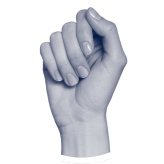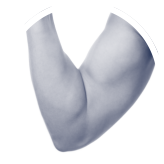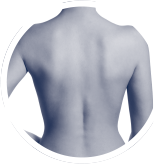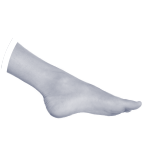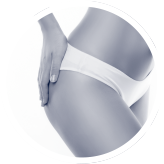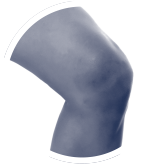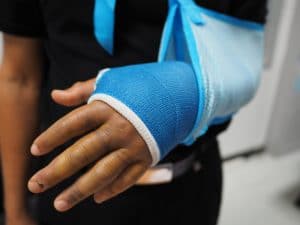
Mr Khai Lam, London Bridge Orthopaedic’s consultant spinal surgeon, discusses cervical disc replacement surgery, the candidates, the procedure, complications and the outcomes. Mr Lam has performed over 1000 cervical and lumbar disc replacements since 2005 and is a key opinion leader in the field of spinal disc replacement surgeries.
What is cervical disc replacement surgery (CDR)?
Cervical disc replacement surgery or CDR is a treatment for patients who suffer from neck and/or arm pains related to degenerative disc disease in their cervical spine. This is also often called herniated disc, radiculopathy or spondylosis.
CDR is a complex advanced spinal surgery that can provide relief from these symptoms through allowing the spinal discs to restore normal movement and preventing further local degeneration in other discs.
What happens during the surgery?
During the procedure, an artificial ‘mobile bearing’ disc is implanted through the front of the neck via a small 2cm incision. It is the exact same approach surgery that we use for a routine neck fusion operation where the unhealthy disc is removed and the bone spurs and herniated disc material are gently shaved off. This relieves pressure off of the spinal cord and nerve roots thus alleviating neck and arm pain.
However, the difference with CDR compared with other routine neck fusion operations is that rather than putting in some bone material or a cage inside the disc space, we can instead put an artificial disc in its place.
Am I a good candidate for CDR?
Are you the following?
- Are you at least 20 years old?
- Do you suffer from an intractable arm or neck pain due to a degenerated disc?
- Not responded to non-operative treatment, such as pain medication, physiotherapy and injections, for more than 6-8 weeks?
- Do you suffer from progressive functional nerve deficits like arm weakness or numbness?
- Do you have signs of myelopathy, for example gait difficulties or bladder problems, as a result of compression of the spinal cord?
Fortunately, surgery only is required in less than 10% of the patients, and the majority will improve with non-surgical measures.
Who shouldn’t receive CDR?
You shouldn’t receive the surgery if you:
- are less than 20 years old because your bones are not mature enough and still growing
- are suffering from a bone-forming disease, e.g. ossification of the posterior longitudinal ligament (OPLL) or diffuse idiopathic skeletal hyperostosis (DISH), because bone may form around the artificial disc and prevent it from moving normally
- have been diagnosed with severe osteoporosis
- have a stiffening of the neck or severe degeneration
- have a kyphotic or scoliotic deformity, i.e. twisted neck, unstable or overly weak neck muscles
- have allergies or sensitivity to metals or plastic
If you are unsure regarding any of the above, then please consult your treating surgeon.
Why is CDR superior to traditional fusion surgery?
Unlike a fusion procedure, which aims to stiffen or fuse two vertebral bones together, CDR aims to preserve the normal movement of the cervical disc and spine thus allowing for a more easily moveable neck.
The benefits include:
- The activity restrictions after surgery are much less with CDR, meaning that you can leave the hospital sooner with an earlier return back to work and sports, including contact sports, e.g. rugby.
- You have reduced chances of adjacent segment degeneration, i.e. accelerated wear and tear for the adjacent discs, because the artificial disc absorbs some of the stresses of the neck.
- You may avoid a separate incision as sometimes the bone graft for the fusion surgery may come from your pelvis or hip bone.
Is there only one type of artificial disc device available?
The answer is no. There are a number of varieties of artificial discs, which differ in their designs and materials, but share similar goals of replacing the natural moving disc. Among the most popular are:
- Prodisc-C: is a chrome cobalt metal device which is secured into the host vertebrae by a keel. It features a semi-constrained design with an ultra-high density polyurethane or plastic dome articulating in an oval-shaped metal cup.
- Bryan disc: is a composite device with articulating polyurethane ring within a saline-filled chamber. It relies on bone ingrowth along its porous-coated end plates for final fixation.
- Cummins device: this design introduces an articulating coupling attached to the vertebral bodies with plates and screw fixation. It was modified and reintroduced as the Prestige II disc.
- Prestige II disc: this is a stainless steel metal-on-metal bearing articulating device with keel fixation into the vertebral.
The M6-C is the latest, so-called 4th generation device that is being utilized with great success in Europe and has been used at London Bridge Hospital since 2012 by highly experienced surgeons. It has titanium outer plates sandwiching an artificial nucleus made of special polycarbonate urethane and a woven fibre annulus made of polyethene. This is the only device shown to replicate natural disc motion and biomechanically tested under extreme forces for more than 10 million cycles, i.e. it is very durable and will last your lifetime. For more information please go to www.spinalkinetics.com. Mr Lam performs over 100 CDRs annually since 2005.
What are the potential complications of CDR?
The primary risks for patients undergoing cervical disc replacement are similar to those experienced by patients undergoing cervical fusion.
Among the most common very minor and rare risks include:
- difficulty swallowing or dysphagia
- hoarse voice or dysphonia.
Most patients who suffer from dysphagia or dysphonia improve over a short time frame. This very rare risk is thought to be due to manipulation with subsequent swelling of the anterior neck structures.
Another very rare risk would be displacement of the device from the disk space, resulting in pressure on the airway anteriorly or the spinal cord at the back.
Long-term wear of the device may rarely result in failure and necessitate the need for further revision surgery similar to total joint replacements elsewhere in the body. Because motion is maintained at the segment, there is the small risk of developing nerve symptoms on the opposite side as a result of the production of bony spurs from continued motion and disc irritation. The M6C has been tested over 10 million cycles and produces negligible wear debris, is extremely resilient, and will lasts more than 50 years of human day to day use.
Routine, i.e. less than 1% risk of intraoperative complications includes infection, bleeding, hardware failure, and extremely rarely paralysis and death may occur at a rate of 0.001%. Also, the need for further surgery cannot be excluded, especially adjacent levels from natural wear and tear. Consequently, as with any neck surgery, CDR should only be performed in highly experienced hands to ensure full patient safety leading to uneventful recovery and return back to normal life.
What can I expect after surgery?
As with any surgery, you should expect some discomfort, as well as a period of rehabilitation, however, the immediate postoperative pain is usually minimal and last for a few days. Your doctor will prescribe medicines to help you manage any pain or nausea that you may experience.
How long will I be in the hospital?
Most patients stay in overnight, some patients will be able to go home the same day and some patients might even stay for two days, but in general, people are in the hospital overnight and go home the following day.
Do I have to do anything special after I go home?
Sometimes for comfort or in order to help the wound heal, you may be put in a soft collar for a short period of time (usually 1-2 weeks). Neck movements are restricted to less than 50% in all directions in the first 2 weeks of surgery. Neck exercise performed under physiotherapy supervision and swimming can commence at 2 weeks following surgery.
You will also be instructed not go to full activities immediately and avoid heavy and prolonged duties, but certainly you can resume light activities such as driving and doing things around the house within a week to 10 days. All activity restrictions are usually removed after 6 weeks following surgery with a full return back to normal impact activities, e.g. running and gym activities as pain allow.
When can I go back to work?
Most patients are allowed to return back to work within 1-2 weeks following CDR.
What is the post-operative follow-up?
To check on your progress, we need to see you routinely at 6 weeks, 3 months, 6 months and occasionally 12 months after surgery. You will then be asked to fill a disability and health questionnaire forms at each appointment, which helps us assess your progress and your physical condition. You will also need to have a standard X-ray every time you see us to ensure that the CDR is in its correct position. Rest assured the CDR will not move as it stabilizes and grows into the bone at 2 weeks and beyond. After 12 months, you can be safely discharged. However, you can always contact your doctor if you need reassurance or any further advice at any time.
For more orthopaedics news, follow London Bridge Orthopaedics on Twitter, Facebook and LinkedIn.


